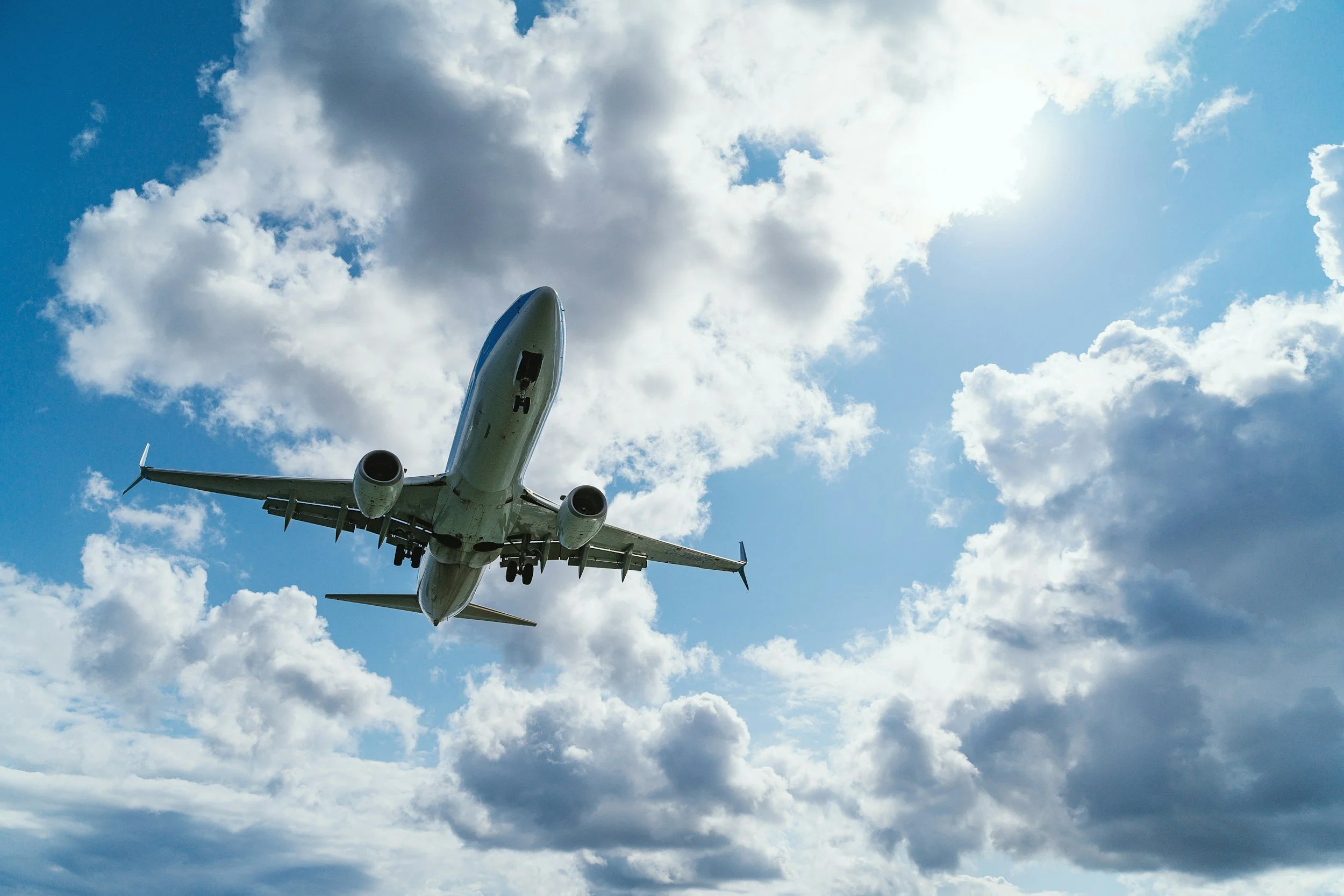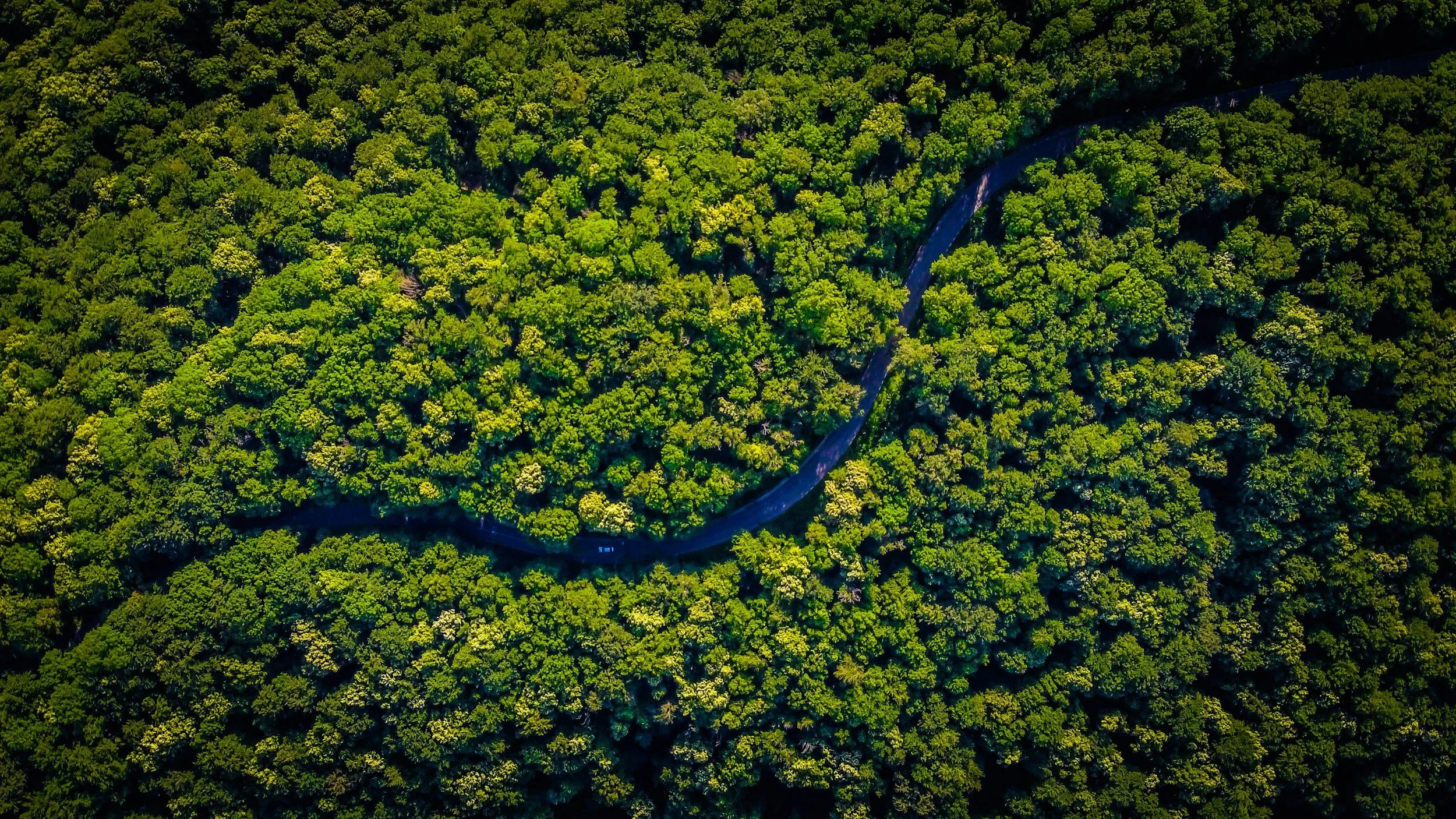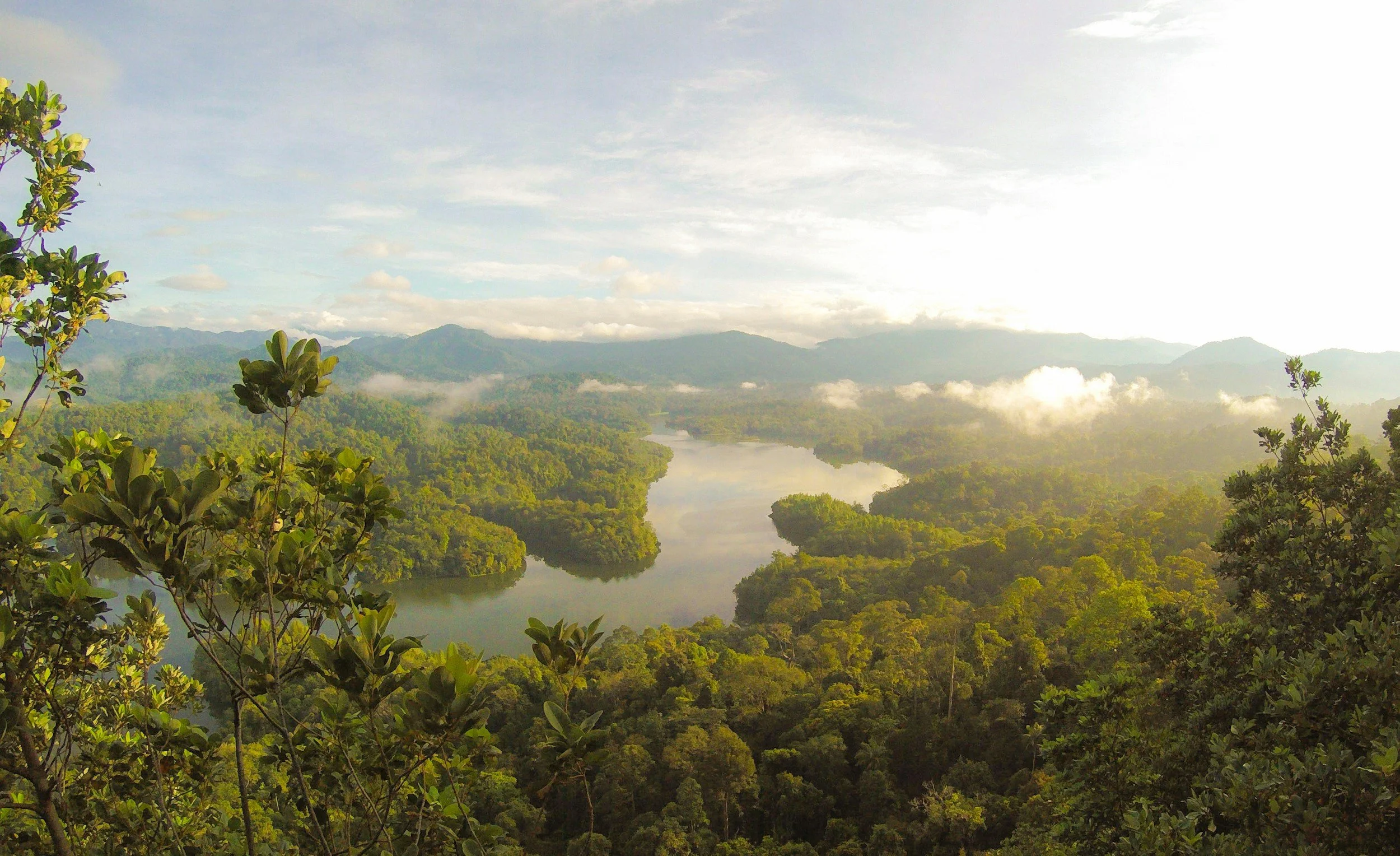
Integrating Forest Conservation Contributions into Online Travel Agencies
A Cost-Effective, Scalable Approach to Environmental Stewardship
Public concern about climate change is high. The 2024 Peoples’ Climate Vote Survey reveals:
56% think about climate change daily or weekly.
63% factor climate impacts into purchasing decisions.
80% desire increased climate action.
81% support nature-based climate solutions.
Executive Summary
Climate change poses significant risks to global ecosystems, economies, and public health. Forest conservation and reforestation offer effective and immediate opportunities for mitigating atmospheric CO₂. According to NASA.gov, forests currently sequester approximately 7.6 billion tons of CO₂ annually—about 1.5 times the total emissions from the U.S. economy²³. This paper proposes integrating voluntary forest protection contributions at checkout to online travel agency platforms. This offers an immediate, scalable, and cost-effective way to slow atmospheric CO₂ accumulation.
Forest conservation is a cost‑effective strategy for mitigating climate change with positive consumer sentiment. Many projects safeguard forests for as little as US $5–10 per acre, and 99% of their protected forests remain intact²¹. A 2017 study indicates that conserving and managing forests could prevent about 7 billion tons of CO₂ each year—an amount comparable to eliminating every car on the planet⁷ ²⁷.
New empirical research demonstrates strong consumer preference for online travel agencies offering seamless forest preservation contribution options. In an experimental setting, 69% of participants chose to donate their own money towards rainforest preservation, and 75% indicated they would prefer a platform offering easy-to-use donation features. Importantly, integrating this feature did not negatively impact consumer perceptions or booking intentions.
Implementation would be straightforward and cost-effective, leveraging existing donation infrastructure. Even modest consumer participation could generate nearly $950 million annually, preserving millions of acres of rainforest and sequestering billions of tons of CO₂ over time. Individual airlines already utilize voluntary donation programs, underscoring their feasibility and effectiveness.
I recommend online travel agencies (e.g., Expedia, Booking.com) implement a rainforest protection contribution feature at checkout, directing 5-10% of ticket costs to reputable organizations like Rainforest Trust. At roughly $10 per acre, these contributions effectively mitigate carbon emissions and preserve biodiversity.
Introduction
Climate change represents a global challenge that requires a multidimensional solution. While long-term climate technology will likely be necessary, easy-to-implement near-term strategies should also be implemented to mitigate the worst effects of temperature rise. Protecting the world’s rainforests represents an immediate cost-effective strategy to sequester CO₂ from the atmosphere. Forests capture more CO₂ each year than the US economy produces, but are increasingly at risk. The Intergovernmental Panel on Climate Change (IPCC) Assessment Report 6 (AR6) emphasizes forestry’s substantial mitigation potential, estimating that reduced deforestation could prevent over 4 billion tons of CO₂ emissions by 2050, with over half achievable at less than $20 per ton.
This paper proposes integrating voluntary forest-based contributions into online travel agency platforms. This simple yet impactful solution aligns closely with consumer preferences and stands to increase consumer loyalty while providing significant environmental benefits.
Public Opinion
Public concern about climate change is high. The 2024 Peoples’ Climate Vote Survey (73,000 respondents) revealed that:
56% think about climate change daily or weekly.
63% factor climate impacts into purchasing decisions.
80% desire increased climate action.
81% support nature-based climate solutions²⁴.
A 2018 poll from the National Opinion Research Center ³ reported that 57% of Americans would pay $1 monthly for environmental restoration, and 23% would contribute $40 monthly. In 2024, Andre et al.² found that 69% of 130,000 respondents would donate 1% of their income for climate solutions. Despite this willingness, only 3.6% of U.S. charitable giving supports environmental causes¹¹. This discrepancy highlights a critical need: providing easy, direct opportunities for consumers to donate.
A 2025 poll by the Global Sustainable Tourism Council found a growing consumer demand for businesses that actively support climate action. Their survey discovered that a significant majority of travelers—up to 92%—express interest in sustainable travel options, yet only about 57% have implemented them, highlighting a gap between awareness and action. Additionally, 76% of travelers believe that sustainable travel choices are crucial for future generations, and 21% reported being willing to pay 5% more for sustainable travel options. 72% of participants said they are more likely to use online travel agencies with sustainable travel offerings¹².
Environmental Contributions to Slow Climate Change
Air Travel’s Environmental Impact
Air travel accounts for about 2.5% of global CO₂ emissions¹⁹ (~950 million tons each year), with growth expected as global wealth increases. A round-trip flight from New York to Los Angeles releases around 1.2 tons of CO₂ per passenger. The United States produces roughly 5.6 billion tons of CO₂ annually¹⁷.
Rainforest Protection is an Effective, Immediate Solution
Reforestation and forest preservation are among the most cost-effective and scalable methods of carbon sequestration and have been identified by the IPCC as a mitigation option with high potential⁶. Protected forests capture carbon immediately and offer co-benefits, including biodiversity conservation, water regulation, and climate resilience.
Between 2001 and 2019, global forests absorbed about twice as much CO₂ as they emitted²³—a net carbon sink of approximately 7.6 billion tons of CO₂ annually¹⁴. Preserving rainforests does not require complicated technology. For example, Brazil’s Menkragnotí Indigenous reserve absorbs about 10 million tons CO₂ more than it emits each year, whereas adjacent unprotected lands have become net emitters²³.
Affordability and Feasibility
While the exact contribution required to offset emissions from flying is difficult to calculate, 5% of the ticket price would provide a meaningful benefit. For example, a $400 plane ticket would yield a $20 donation, which would protect approximately 2 acres of rainforest. This rainforest would continue to sequester over 2 tons of CO₂ per year.
Example
As of 2019, each passenger-kilometer creates approximately 157g of CO₂⁵.
A one-way flight from New York City to Los Angeles is 3,944 km.
This results in 0.62 tons of carbon per passenger for this flight, or 1.24 tons of CO₂ for a round trip.
It costs under $10 to preserve an acre of rainforest²¹. Of the forests preserved by Rainforest Trust in the last 30 years, 99% remain intact.
An acre of rainforest sequesters between 1 and 2.5⁸ ⁹ ²⁵ tons of CO₂/acre/year.
Thus a contribution of 5% of ticket price could protect 2 acres of rainforest, helping to sequester over 2 tons of CO₂ annually, per traveler.
Potential Impact at Scale
Average round-trip flight (NYC–LA): $400 fare, ~0.6 tons CO₂
A 5% contribution ($20) could fund projects that sequester 2+ tons of CO₂annually
Total revenue for airline ticket sales in 2024: $744 billion¹⁵
51% of consumers purchase airline tickets using online travel agencies¹⁰ (which currently do not offer environmental contributions at checkout)
If just 5% of customers opted to donate 5% of their booking value:
$379 spent on airline tickets through online travel agencies × 0.05 (contribution per ticket) × 0.05 (participation rate) = $948 million annually.
At $10 per acre protected, this equates to 94.8 million acres of rainforest preserved annually.
Over 10 years, these forests would sequester approximately 1 billion tons of CO₂²⁶.
Organizations Supporting Forest Preservation
Many conservation organizations work to protect ecologically important land through purchase, legal designation, or long-term management in partnership with local communities. Groups such as Rainforest Trust, The Nature Conservancy, World Wildlife Fund, Wildlife Conservation Society, World Land Trust, and Conservation International each use variations of this model, ranging from targeted land acquisitions to supporting the creation and stewardship of large protected areas. Projects are selected based on biodiversity value, carbon storage potential, and vulnerability to threats such as logging, agricultural conversion, or urban expansion. Tropical deforestation would be the fourth‑largest emitter of greenhouse gases if it were a country, yet the remaining tropical forests still remove twice as much CO₂ as they emit each year²¹. Halting deforestation is essential both to keep historical carbon locked in wood and soil and to maintain this ongoing carbon sequestration. Unlike traditional offsets that claim a one‑to‑one balance, contributions to these organizations are best understood as climate investments that reduce environmental impacts compared to a business‑as‑usual deforestation trajectory.
Example: Rainforest Trust and The Peruvian Amazon Project
Rainforest Trust is a non‑profit organization that protects tropical forests by establishing and expanding protected areas through partnerships with local organizations and Indigenous communities. Rainforests are critical as both store more carbon per acre than other types of forest, and they are quickly being lost. Many projects safeguard forests for $5–10 per acre, and 99% of the forests they have protected remain intact²¹. Contributions to the Rainforest Trust support the purchase and protection of high‑carbon frontier forests that store billions of tons of carbon.
Rainforest Trust and its local partner, Center for the Development of an Indigenous Amazon (CEDIA), have already protected nearly 14 million acres of rainforest in Peru through several large‑scale projects and are working to protect an additional 1.6 million acres²¹. These protected areas span an area larger than the entire U.S. state of Maryland. The project’s benefits are multifaceted. At least 68 threatened species now thrive within the reserves. Rainforest Trust and CEDIA have helped 189 Indigenous communities gain legal title to their ancestral lands so they can sustainably manage and protect their forests. The protected areas safeguard about 2.8 billion tons of carbon²¹, equivalent to roughly seven years of Germany’s annual CO₂ emissions. This immense carbon stock would likely be released if the forests were logged or converted to agriculture.
Additionality
Organizations like Rainforest Trust and The Nature Conservancy strengthen the case for additionality by directing their efforts toward frontier forests—regions under acute threat from logging, agriculture, or other human pressures. By focusing on areas with imminent risk, these interventions are more likely to result in conservation outcomes that would not occur under a business-as-usual scenario. This approach is particularly urgent given the alarming rates of forest loss. In 2023 alone, approximately 9.1 million acres of primary tropical forest were cleared, releasing an estimated 2.4 billion tons of CO₂ into the atmosphere¹⁶ ²². That equates to roughly 10 soccer fields disappearing every minute. These staggering losses demonstrate the critical importance of protecting high-risk forest areas.
Governance and Monitoring
These groups have achieved high success rates because they combine rigorous project selection with strong governance and on‑the‑ground monitoring. They partner with trusted local NGOs and Indigenous communities, ensuring projects have broad social support. They use legal mechanisms such as land titles, conservation easements and government‑designated protected areas to secure land tenure. Furthermore, Rainforest Trust ensures that 100% of public donations go directly to conservation action because board members and major donors cover administrative and fundraising costs²¹.
Contributions versus offsets
Traditional carbon offsets claim to “neutralize” a ton of CO₂ by financing an equivalent reduction elsewhere. However, many forest offsets have been criticized for over‑crediting, inadequate monitoring and lack of permanence. Donating to forest‑protection organizations avoids the pitfalls of carbon accounting and frames the contribution as a climate benefit rather than a licence to pollute. By supporting conservation through voluntary forest protection contributions, travelers help prevent future emissions and protect ongoing carbon sequestration without making unrealistic claims of full compensation. Forest‑protection contributions should complement, not replace, efforts to reduce aviation emissions. Airlines must continue investing in fuel efficiency, sustainable aviation fuels, operational improvements and emerging zero‑emission aircraft. By combining these strategies, the aviation sector can accelerate its progress towards net‑zero.
Co-Benefits Beyond Carbon Sequestration
It is also useful to consider the potential carbon released if an acre of forest is cut down in a typical deforestation event (e.g., removing forests to plant new soybean crops or for cattle grazing). While this process is discussed in detail by Noon and colleagues¹⁸, across all ecosystem types, the average carbon loss is 37.7 tons per acre. Policies to reduce tropical deforestation by half by 2050 could avoid up to 50 Gigatons of carbon emissions this century¹³.
Forest conservation also preserves biodiversity and aids in water regulation. Tropical rainforests harbor more than half of Earth’s species. Protecting these forests safeguards thousands of plant and animal species from extinction. Intact forests regulate regional rainfall, reduce flood risk, and moderate temperatures. They also protect watersheds that supply water to millions of people.
Application
While no major online travel agencies offer voluntary environmental contributions at checkout, individual airlines have successfully implemented voluntary environmental donation programs, providing passengers with options to directly fund environmental initiatives when booking. Airlines such as Qantas, Virgin Australia, Delta, British Airways, Jetstar, United Airlines, Air Canada, JetBlue, Air New Zealand, and Gulf Air currently offer contributions at checkout options, directing funds toward forest preservation and renewable energy projects. According to the 2024 SITA report, 65% of US airlines have implemented passenger-paid offsets with approximately 40 airlines around the world offering such programs.
Globally, aviation emissions are managed by the Carbon Offsetting and Reduction Scheme for International Aviation (CORSIA), an initiative of the International Civil Aviation Organization (ICAO). CORSIA requires airlines to offset CO₂ emissions above their 2019–2020 baseline through verified carbon credits, using robust measurement, reporting, and verification systems. It is anticipated to offset 2.5 to 4 billion tons of CO₂ by 2035¹, complementing industry advancements in sustainable fuels and aircraft efficiency.
A noteworthy example is Air New Zealand's FlyNeutral program, which splits passenger contributions between ISO-certified carbon credits and native reforestation efforts. In 2024 alone, participation rates of 3.4% to 7.1% resulted in NZD $998,000 raised, mitigating 58,488 tons of CO₂⁴ and enabling the planting of nearly 123,000 native trees. This program demonstrates both practical feasibility and impactful environmental outcomes achievable through voluntary participation.
Expanding similar contributions programs to major online travel agencies could substantially amplify environmental impacts. Given that 51% of airline tickets are booked via online travel agencies¹⁰, even modest participation rates could yield billions of dollars for forest protection projects, enhancing sustainability and consumer engagement at scale.
Conclusion
This paper does not attempt to quantify the extent to which natural climate solutions could offset airline emissions; such calculations are inherently complex and likely unattainable. Nor does it suggest that forest preservation contributions can fully neutralize the climate impact of air travel. Achieving carbon neutrality in aviation will require technological advances such as sustainable aviation fuels, zero-emission aircraft, and operational efficiency gains.
Nevertheless, the evidence presented here demonstrates that integrating rainforest protection contributions into online travel agency checkout processes offers a practical, low-cost, and high-impact means of addressing part of the sector’s emissions in the near term. While these contributions cannot eliminate aviation’s climate footprint, they can meaningfully reduce net emissions until longer-term solutions can be implemented.
Rainforests are among the planet’s most effective carbon sinks, yet tropical deforestation is accelerating, releasing vast quantities of stored carbon. Protecting these forests is one of the most cost-effective mitigation strategies identified by the IPCC.
At the same time, consumer demand for visible climate action is strong, with travelers expressing clear preferences for sustainable booking options. A well-designed contribution feature can harness this willingness to act, generating substantial funding for high-impact conservation projects while enhancing brand affinity and customer advocacy.
This convergence of environmental urgency, market demand, and strategic opportunity gives online travel agencies a chance to lead. By integrating rainforest protection contributions at checkout, they can strengthen brand favorability, deliver measurable climate benefits, and position themselves at the forefront of the travel industry’s contribution to global climate solutions.
Call to Action
To online travel agencies such as Expedia and Booking.com
Implement an option to donate to forest protection at checkout.
Partner with reputable nonprofits that offer transparency and measurable outcomes.
Communicate your sustainability commitment clearly to consumers.
By implementing the option to donate to forest protection projects at checkout, online travel agencies can enhance customer loyalty while offering a meaningful benefit to customers and contributing to climate resilience.
References
1 ACR Carbon. (n.d.). International Civil Aviation Organization (ICAO). ACR Carbon. https://acrcarbon.org/our-markets/international-civil-aviation-organization-icao/
2 Andre, P., Boneva, T., Chopra, F., & Falk, A. (2024). Globally representative evidence on the actual and perceived support for climate action. Nature Climate Change, 14(3), 253-259. https://doi.org/10.1038/s41558-024-01925-3
3 AP‑NORC Center for Public Affairs Research. (2019, January). Is the Public Willing to Pay to Help Fix Climate Change? Energy Policy Institute at the University of Chicago & AP‑NORC. https://apnorc.org/projects/is-the-public-willing-to-pay-to-help-fix-climate-change/
4 Air New Zealand. (2024, August 29). Annual Results Report 2024. Air New Zealand. https://p-airnz.com/cms/assets/PDFs/air-nz-2024-annual-results-report.pdf
5 Bergero, C., Gosnell, G., Gielen, D., Kang, S., Bazilian, M., & Davis, S. J. (2023). Pathways to net-zero emissions from aviation. Nature Sustainability, 6(4), 404-414. https://doi.org/10.1038/s41893-022-01046-9
6 Busch, J., Bukoski, J.J., Cook-Patton, S.C. et al. Cost-effectiveness of natural forest regeneration and plantations for climate mitigation. Nature Climate Change. 14, 996–1002 (2024). https://doi.org/10.1038/s41558-024-02068-1
7 B.W. Griscom, J. Adams, P.W. Ellis, R.A. Houghton,G. Lomax, D.A. Miteva,W.H. Schlesinger, D. Shoch, J.V. Siikamäki, P. Smith, P. Woodbury, C. Zganjar, A. Blackman, J. Campari, R.T. Conant, C. Delgado, P. Elias, T. Gopalakrishna, M.R. Hamsik. Natural climate solutions, Proceedings of the National Academy of Sciences U.S.A. 114 (44) 11645-11650, https://doi.org/10.1073/pnas.1710465114 (2017).
8 Calvo-Rodriguez, S., Sánchez-Azofeifa, G. A., Durán, S. M., Do Espírito-Santo, M. M., & Ferreira Nunes, Y. R. (2021). Dynamics of carbon accumulation in tropical dry forests under climate change extremes. Forests, 12(1), 106.
9 Chazdon, R. L., Broadbent, E. N., Rozendaal, D. M., Bongers, F., Zambrano, A. M. A., Aide, T. M., ... & Poorter, L. (2016). Carbon sequestration potential of second-growth forest regeneration in the Latin American tropics. Science Advances, 2(5), e1501639.
10 Expedia Group. (2023). The Path to Purchase: Uncovering How Travelers Plan and Book Online. Expedia Group & Luth Research. https://partner.expediagroup.com/content/dam/unified/partner/documents/reports/2023-reports/report-path-to-Purchase-2023-final_en-us.pdf.
11 Giving USA. (2025, June 17). U.S. Charitable Giving Grew to $592.50 Billion in 2024, Lifted by Stock Market Gains. Giving USA. https://givingusa.org/giving-usa-2025-u-s-charitable-giving-grew-to-592-50-billion-in-2024-lifted-by-stock-market-gains/
12 Global Sustainable Tourism Council. (2024, October 21). Trip.com Group’s 2024 Sustainable Travel Consumer Report Insights. https://www.gstc.org/trip-com-groups-2024-sustainable-travel-consumer-report-insights/
13 Gullison, R. E., Frumhoff, P. C., Canadell, J. G., Field, C. B., Nepstad, D. C., Hayhoe, K., & Nobre, C. (2007). Tropical forests and climate policy. Science, 316(5827), 985-986.
14 Harris, N. L., Gibbs, D. A., Baccini, A., Birdsey, R. A., De Bruin, S., Farina, M., ... & Tyukavina, A. (2021). Global maps of twenty-first century forest carbon fluxes. Nature Climate Change, 11(3), 234-240.
15 International Air Transport Association. (2024, June 3). 129 states are participating in CORSIA as of January 1, 2025. IATA Pressroom. https://www.iata.org/en/pressroom/2024-releases/2024-06-03-01/
16 Knutson, J. (2024, April 4). Efforts to curb deforestation around the world are stalling, report finds. Axios. https://www.axios.com/2024/04/04/deforestation-stalling-2023-report
17 MIT Climate. (n.d.). How many new trees would we need to offset our carbon emissions? MIT Climate Portal. https://climate.mit.edu/ask-mit/how-many-new-trees-would-we-need-offset-our-carbon-emissions
18 Noon, M. L., Goldstein, A., Ledezma, J. C., Roehrdanz, P. R., Cook-Patton, S. C., Spawn-Lee, S. A., ... & Turner, W. R. (2022). Mapping the irrecoverable carbon in Earth’s ecosystems. Nature Sustainability, 5(1), 37-46. https://doi.org/10.1038/s41893-021-00803-6
19 Our World in Data. (2024, April 8). What share of global CO₂ emissions come from aviation? Our World in Data. https://ourworldindata.org/global-aviation-emissions
20 Rainforest Alliance. (n.d.). Home. https://www.rainforest-alliance.org/
21 Rainforest Trust. (n.d.). Many of our projects protect forests for as little as $5–10 per acre, and 99 % of preserved forests remain intact. https://www.rainforesttrust.org/fighting-climate-change/
22 Rainforest Trust. (n.d.). Rainforest Climate Action Fund. https://www.rainforesttrust.org/urgent-projects/rainforest-climate-action-fund/
23 Streiff, L. (2021, February 3). NASA satellites help quantify forests’ impacts on global carbon budget. NASA. https://www.nasa.gov/science-research/earth-science/nasa-satellites-help-quantify-forests-impacts-on-global-carbon-budget/
24 UNDP & GlobeScan. (2024). The Peoples’ Climate Vote Report 2024. United Nations Development Programme & GlobeScan. https://peoplesclimate.vote/document/Peoples_Climate_Vote_Report_2024.pdf
25 U.S. Environmental Protection Agency. (2024, November). Greenhouse Gas Equivalencies Calculator – Calculations & References. U.S. EPA. https://www.epa.gov/energy/greenhouse-gas-equivalencies-calculator-calculations-and-references
26 U.S. Geological Survey. (2022, July 7). Fifty Years of Landsat: Observing Global Forests from Above the Canopy. U.S. Geological Survey. https://www.usgs.gov/news/featured-story/fifty-years-landsat-observing-global-forests-above-canopy
27 World Resources Institute. (2018, July 12). Conserving forests could cut carbon emissions as much as getting rid of every car on Earth. World Resources Institute. https://www.wri.org/insights/conserving-forests-could-cut-carbon-emissions-much-getting-rid-every-car-earth











